Affiliate disclosure: This post may contain affiliate links. Please see our Privacy Policy.
Yarrow (Achillea millefolium) is one of the most useful and widely available herbs you can find. Once you know how to identify yarrow, you’ll see it everywhere. The plant has dozens of traditional uses, most of which have been validated by modern medical science.
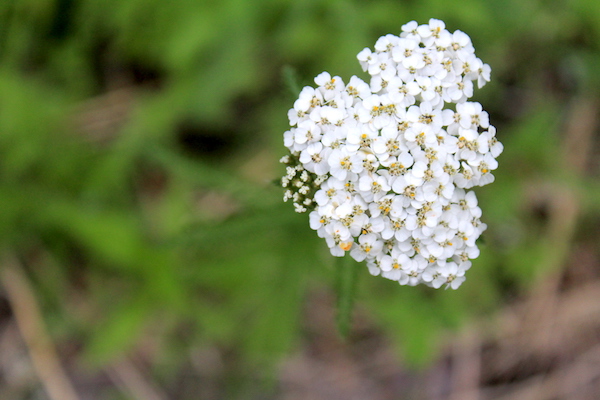
When I first started my journey as a herbalist in my early teens, I was determined to find yarrow. Plant life was hard to come by in the desert of southern California, and I rarely identified anything beyond dandelions. When I moved to the east coast, I felt like I was in a herbal wonderland and yarrow grew along just about every roadside.
I remember telling a friend how excited I was to find it, and clearly, my enthusiasm for the plant really came through. A few months later for my birthday, I opened up a huge box with a 5lb sack of dried yarrow inside.
She just looked at me and shrugged, “What dude? You said you really liked it, right?” I laughed and then filled up several half-gallon mason jars with yarrow that formed the basis of my herbal concoctions all winter long.
Yarrow Range
Even though I had trouble finding yarrow in the desert in California, it can be found in every state in the US and throughout Europe. The Mojave desert is one of the few places it’s not found, just my luck.
In some places, it’s considered an invasive weed, as is just about anything that doesn’t require pampering to thrive. I’ve hardly found yarrow to be invasive, and many people plant the beautiful perennial in carefree flower beds.
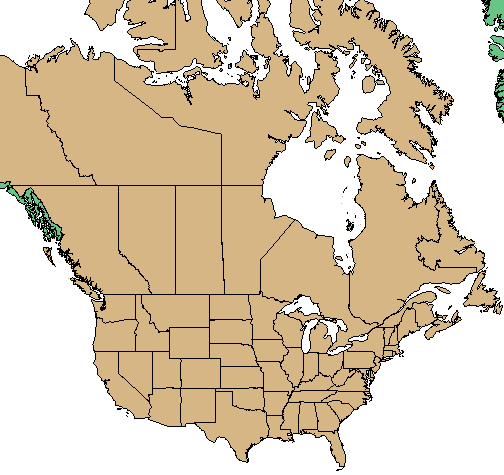
Identifying Yarrow
The trick to identifying yarrow comes from its scientific name: Achillea millefolium. The species name millefolium means many leaves and describes how the individual leaves are small and feathery. In Spanish-speaking regions, yarrow is called plumajillo or “little feather” which describes the leaves.
Achillea in the Latin name comes from Achilles, the ancient Greek hero since the plant is used to stop bleeding, but that’s less helpful with identification. We’ll get to that part later.
The leaves are generally largest toward the bottom of the stem, and are arranged spirally around the stem. They’re ever so slightly hairy/fuzzy and have the tendency to stick to things because of it.
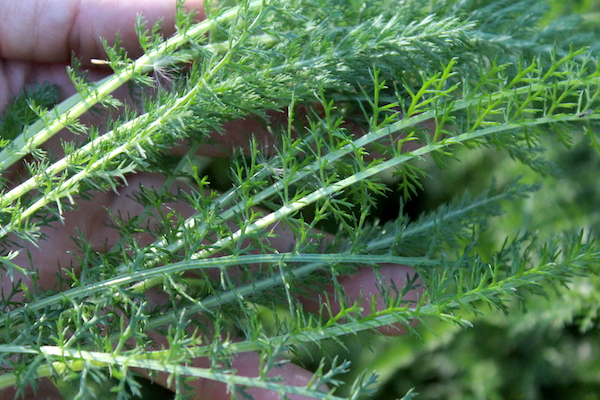
The leaves are the best sure-fire way to identify yarrow. The flowers are very distinct, but until you’ve seen them close up it’s hard to generate a good mental picture of them.
Before I’d seen yarrow in person, I went to investigate every roadside patch of Queen Anne’s Lace trying to see if it had feathery leaves. The thing is, while both plants have white flowers, that’s where the similarity stops.
Yarrows flowers look almost antique to me, like a delicate timeless beauty. They’re densely clustered together, and I don’t know what it is about them that makes me think of prim and proper victorian ladies, and they’re a color that the paint manufacturers are fond of calling “antique white.”
Another great way to identify yarrow is by smell. They have a strong smell that some describe as like chrysanthemums, and others describe as vaguely like cabbage. There’s actually an old-time dream divination that has you place yarrow under your pillow, saying that you’ll either dream of the one you’re to marry or cabbage.
Strange way to put it, but either the power of suggestion will work and your mind will conjure up your perfect mate, or it won’t and you’ll just be smelling cabbage all night. I’ll admit that I tried it once in my teens, and I dreamed neither of cabbage or my true love, so it’s not perfect…
Queen Anne’s lace, on the other hand, smells distinctly of carrots and you’ll know it if you crush the leaves.
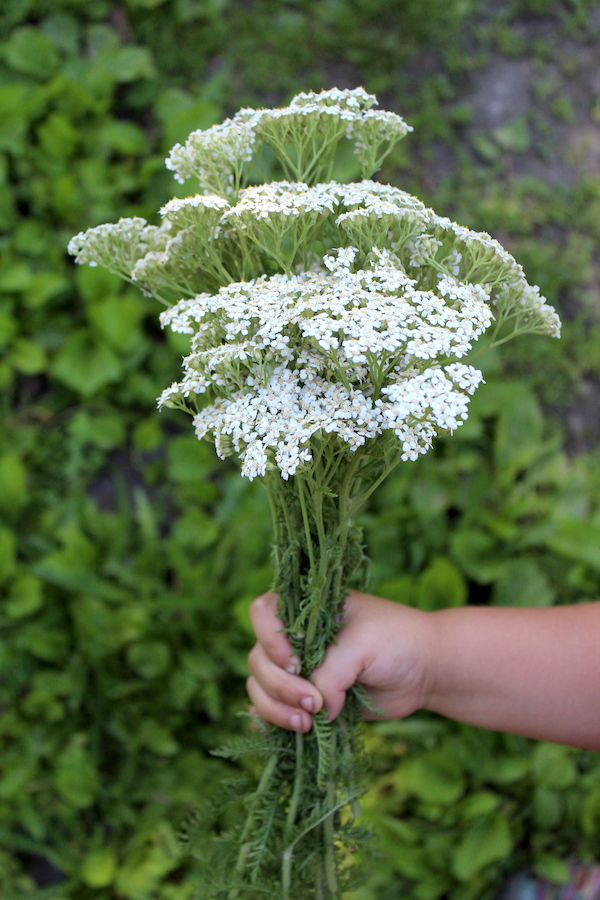
Using Yarrow to Stop Bleeding
While some of yarrow’s common names describe the feathery nature of the leaves such as (milfoil, thousand-leaf, etc), others go right to its uses. It’s commonly known as herbal militaris or soldier’s woundwort because it was used on battlefields to stop bleeding. The name Achillea comes from the same reference, as Achilles is said to have used it in the Trojan war.
I had occasion to test out yarrow on a cut in person, and I can say with certainty that it worked quickly. At a flint knapping class at Roots School where we were making primitive arrowheads, I managed to knap off a large shard in just the wrong way and it lodged itself in my wrist.
I looked down to spirting blood, and before I could say a word the person sitting next to me had whipped out a spray bottle of yarrow tincture from a bag at her feet. She grabbed my wrist, pulled out the shard and sprayed it with yarrow tincture. I watched as the wound puckered up instantly and the bleeding stopped even before she applied pressure.
I was completely blown away by yarrow’s effectiveness, and now a spray bottle of yarrow tincture is a part of my herbal first aid kit. I still have a pretty good scar on my wrist as a reminder, so that lesson won’t soon leave me. If you’re ever going to take a cut to the wrist, do it sitting next to a primitive skills student, you’ll learn a thing or two.
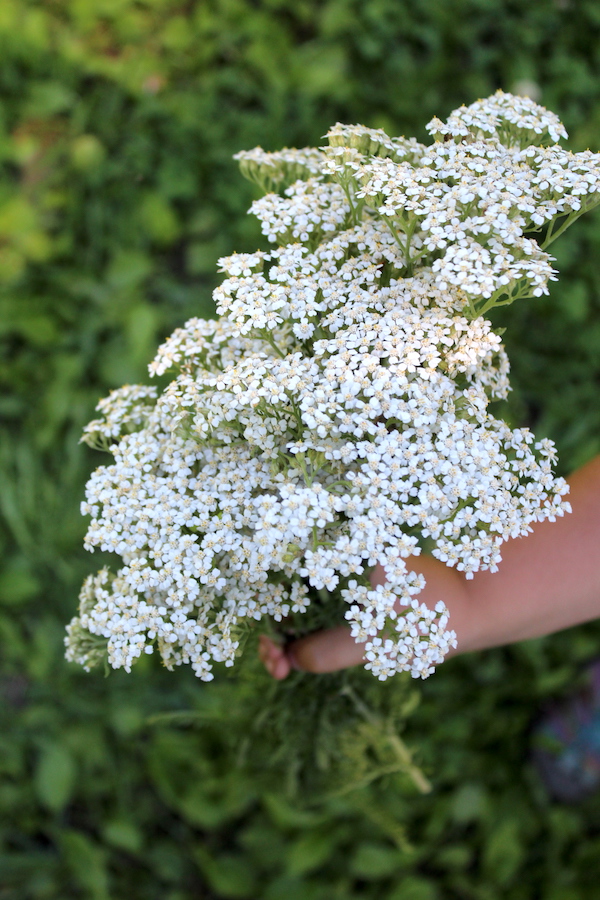
Yarrow Medicinal Uses
While yarrow is perhaps best known for its ability to stop bleeding when used externally, it also has a number of medicinal uses internally. When used internally, yarrow has broader effects on the circulatory system, lowering blood pressure, treating varicose veins, and as a treatment for thrombosis (blood clots) and menstrual clotting.
Interesting how it’s known for staunching blood externally, but then it’s used as a treatment for blood clots internally. Some herbalists call it a circulatory system tonic because it’ll bring the system back into balance. For that same reason, it’s also used in homemade hemorrhoid creams, along with raspberry leaf and horse chestnut.
Yarrow tea is commonly taken for colds and flu, it can induce sweating and reduce fevers. According to Backyard Medicine (my favorite go-to quick wild weed guide), “By relaxing the skin, yarrow will open the pores and allow copious sweating and the release of toxins. Yarrow taken as a tea or as a batch at the beginning of a fever or flu is an excellent way to reduce body temperature.”
Beyond my yarrow tincture spray bottle, I keep dried yarrow on hand for sick time tea.
Other Ways to Use Yarrow
Because of its ability to tone blood vessels, yarrow works as a skin astringent in facial soaps. You can try this homemade recipe for Wild Rose and Yarrow Soap or this Yarrow and Witch Hazel Soap.

Both recipes come from the All Natural Soapmaking E-Book Collection, which has quite a few recipes for wild foraged soaps made with backyard weeds. I’m really enjoying it, and there’s going to be a few homemade wild soaps on my shelf after this summer’s foraging season.
More Wildcrafting Posts
- Foraging and Using Elecampane for Respiratory Health
- Foraging and Using Valerian for Better Sleep
- Foraging and Using Hawthorn for Heart Health
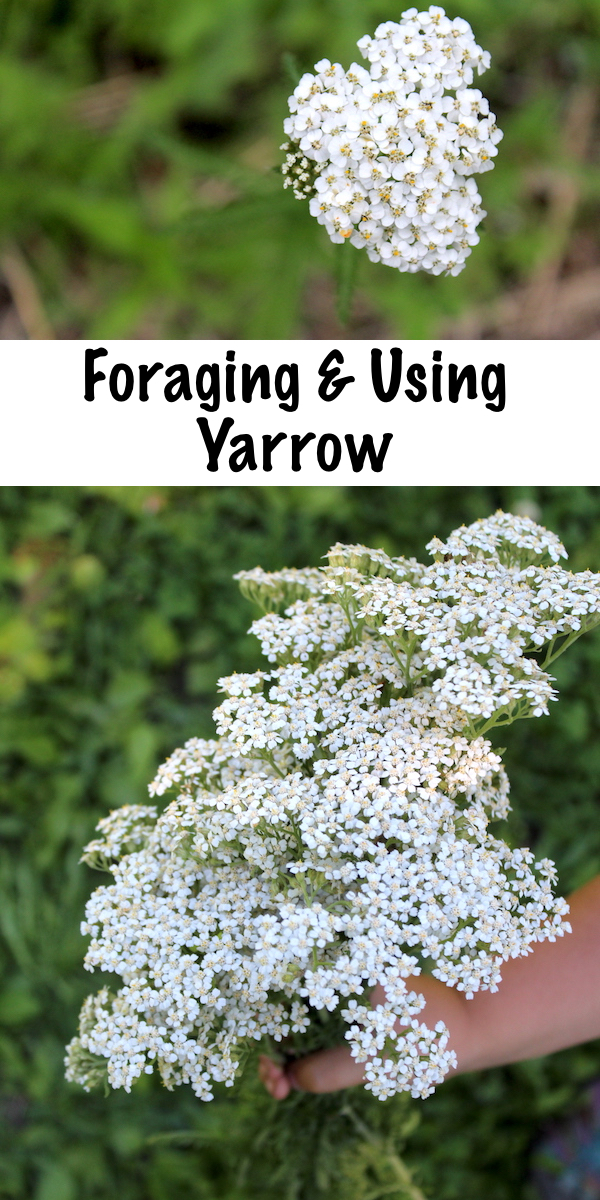


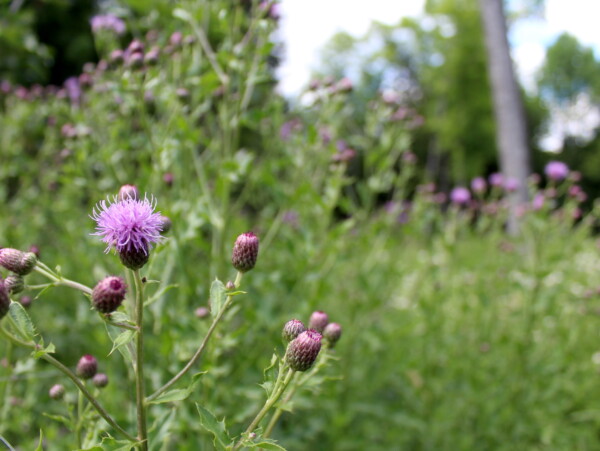
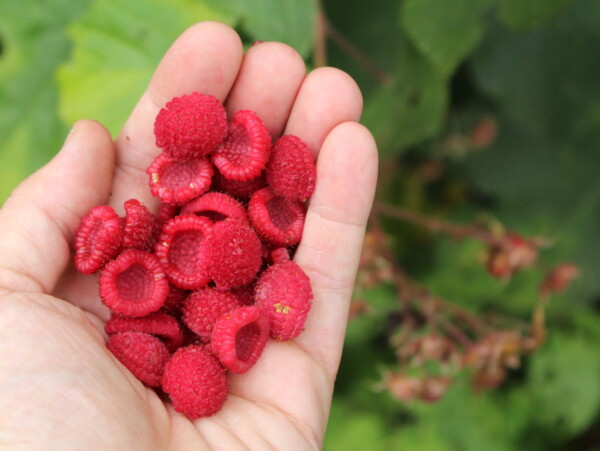










Hi Ashley, for the amazing blood-stopping yarrow spray, do you just use straight yarrow tincture, or is it mixed with water? I never knew that yarrow could do that!
You can use it straight but it will probably burn. If you want to lessen the burn, you can dilute it.
Thanks!
You’re welcome.
I really enjoyed your post. Looking forward to more.
We’re so glad you enjoyed the post.
I found some growing near the train line in the eastern suburbs of Melbourne. Definitely white yarrow. I had some growing through a crack in the concrete when i lived in Ferntree gully which goes to show how sturdy the plant is.
I recently purchased yarrow and it was pink. A friend grows a variety that came up in all pastels. Is this different, or can these types of yarrow be used medicinally as well?
It has always been my understanding that the wild varieties are what are used medicinally. When in doubt just be sure that you are looking at the Latin name “Achillea millefolium”.
Just in case you are curious, and maybe terminology is the hinge here, but it grows EVERYWHERE in Alaska, or Southcentral Alaska anyway (Alaska, Wasilla, Palmer, Kenai peninsula, etc), just not sure if that means native. Also, we found BRIGHT PINK (magenta even) yarrow growing on a random hillside in Palmer, AK and tried transplanting a couple to our own yard in Palmer, AK.. it grew fine, came back the next year, but a very pale pink which later faded to regular old white! And then in Denver from what I saw anyway it seems to be invariably yellow! I know there are various cultivated colors, but what I’m speaking of were all wild plants in wild settings. Crazy, no? Maybe something in the soil?
ANYWAY. Have you heard that using the roots in a tincture is a super effective cure for toothache?? You make your tincture, the fresher the better but you can re-use the roots a couple times with decent potency, and then whenever you have toothaches (admittedly hopefully you never do, but just in case!), you swish a bit around trying to keep it as long as possible on the affected area. Whiskey reportedly works excellently flavor-wise, but brandy and vodka work as well of course.
It’s possible that even a cultivated variety can be growing in the wild. It happens many times when people plant ornamentals in their yards and they eventually make their way to the wild and can sometimes become quite invasive. With that said it’s possible I guess that it could have something to do with the soil. If you find any solid research on it feel free to come back and share.
Right, makes sense, that’s why I wasnt sure if the most accurate word for its existence in AK was native or just naturalized.
Re: research, do you mean re: oral health or soil/color correlation?
Here are a couple re: oral health:
https://arealgreenlife.com/yarrow-oral-care/ (many links at the end)
https://permies.com/t/115101/kitchen/Yarrow-root-tincture-mouthwash-dental (more how-to with making a root tincture than anything else; no data, just anecdotal evidence)
Yarrow root is also known to take toxic metals out of the ground, and that’s what causes color change…white means non toxic metals…
That’s interesting. I hadn’t heard that before. I just thought those were cultivated varieties.
Yarrow thrives here in western BC
(we even have a small town of that name).
On our off-grid homestead we gather and dry it every year.
Our kids call it “tummy ache tea”,
and it’s a wonderfully quick and gentle remedy for stomach troubles,
whether caused by a “bug” or by injudicious feasting.
This is the best homestead blog I’ve encountered!
Thank you. So glad you’re enjoying the blog.
Are you using the leaf or flower to make your teas and tinctures?
For any herbal tincture, you can use every part of the plant.
If you are foraging for wild yarrow, please be aware of an extremely toxic look-alike called Poison Hemlock. Amateur foragers can mistake one for the other. There are differences, but you need to be able to spot them
Thanks for the article and also the reply about color. I just planted my third yarrow in the front garden bed. One was called rainbow and is a mustard yellow. The other two are called terra cotta and should become more orange. Lovely plants. Hope to find they have a medicinal use.
I have golden yarrow in my yard. Can I use that to make a tincture and tea? You are showing photos of the white one. If yes, what parts do I use and how long does it sit in alcohol?
Thank you!
Sophia Ionin
I honestly don’t know if golden yarrow is different medicinally, I’ve always foraged the white variety.
Hi Ashley, I wonder if you can suggest a source for wild yarrow plants or seeds. I’d sure appreciate a pointer. Thanks very much!
I’d suggest trying Fedco (which is where we purchased some in bulk a while back) or strictly medicinal seeds.
Just got acquainted with yarrow recently. What an awesome creature. And the smell is so wonderful – herby and savory. Thanks for this post!
saw the article first on facebook…just love your presentation. Was tracking the Hosta comments, who knew? Keep up the wonderful field work.